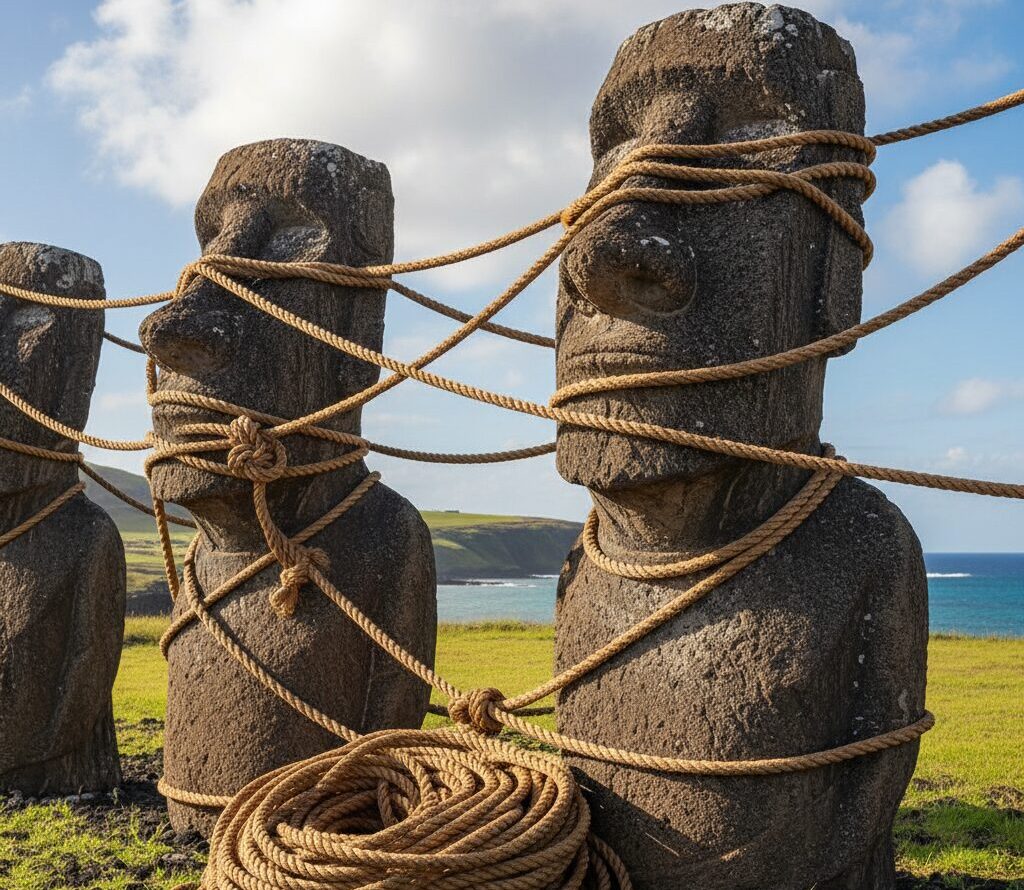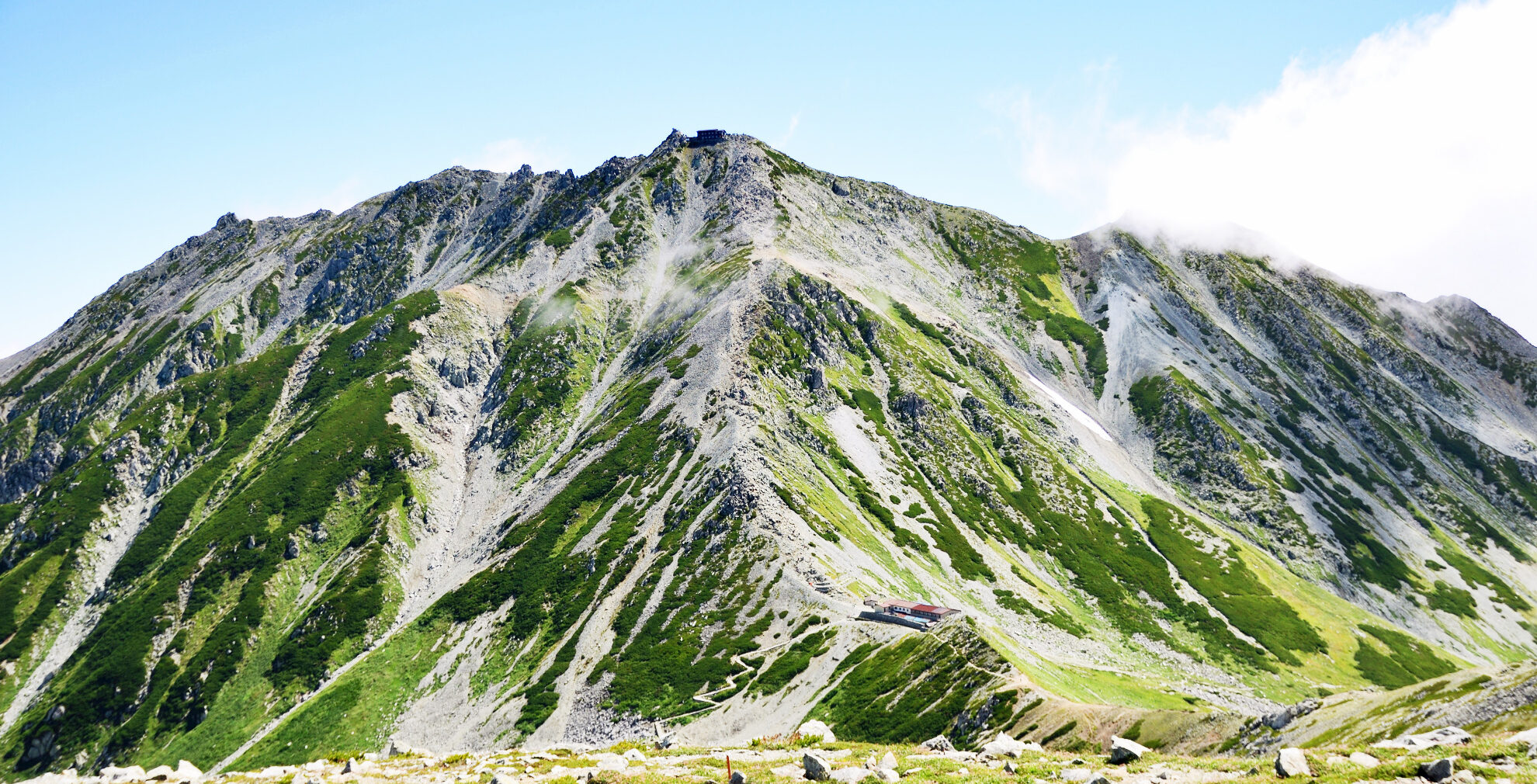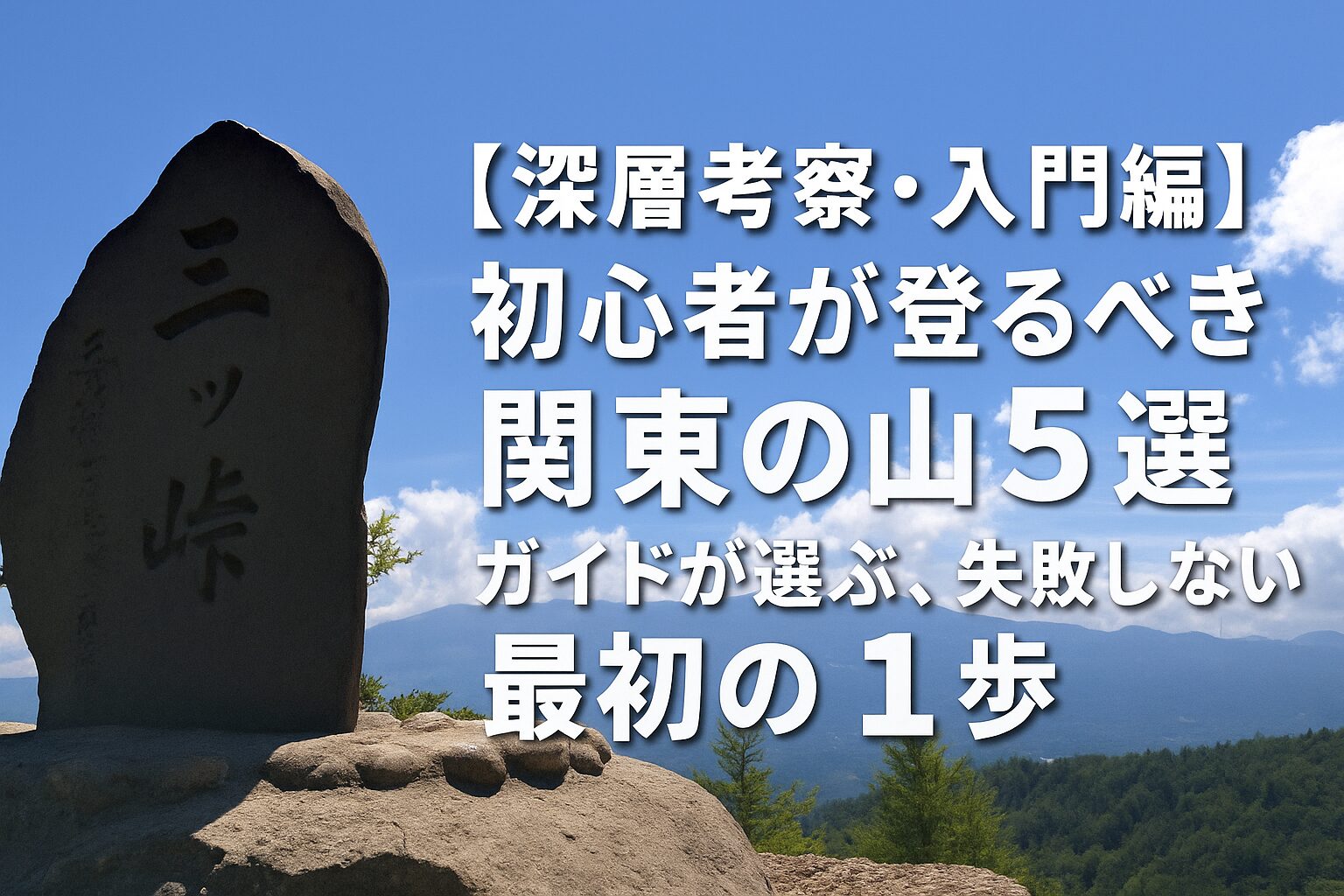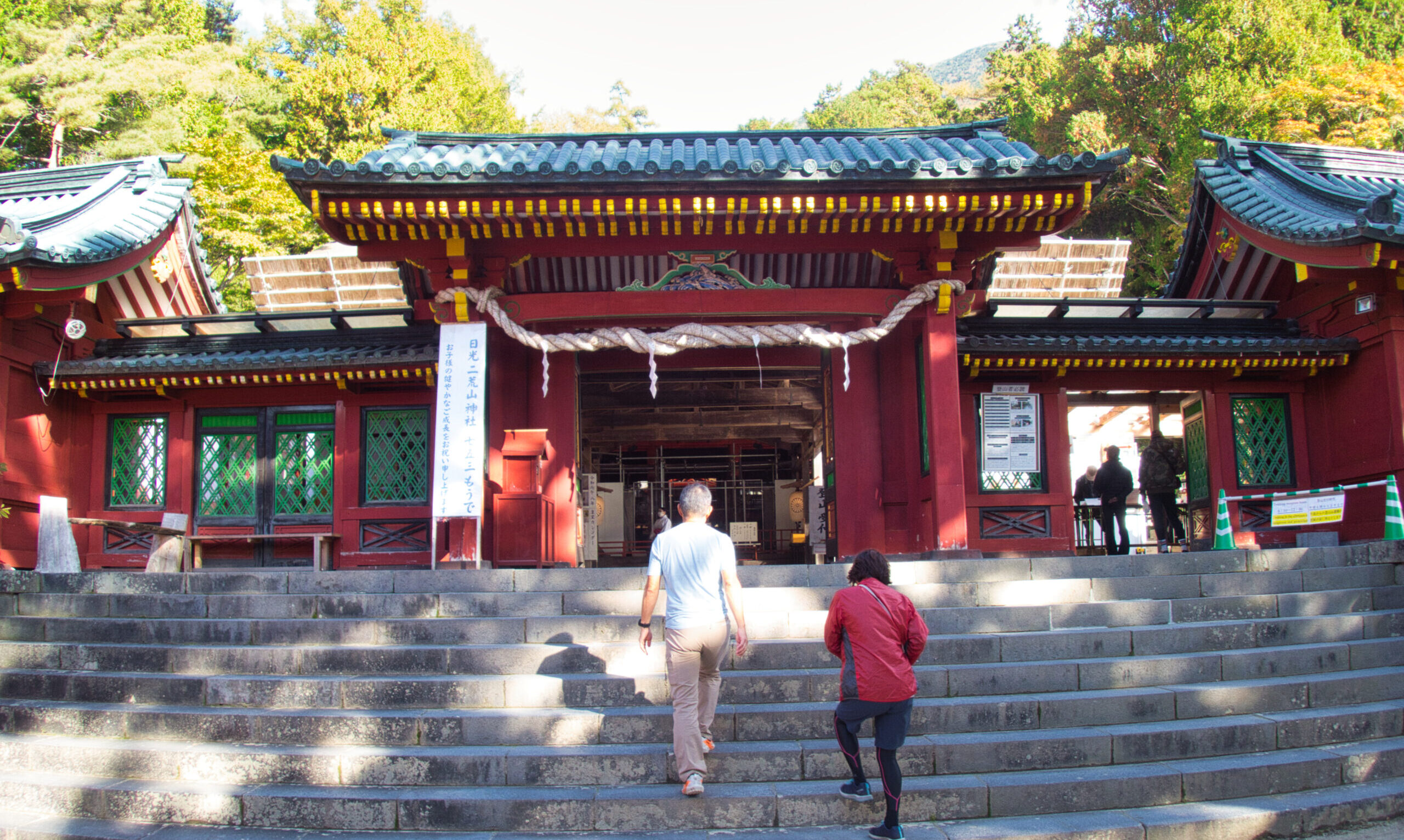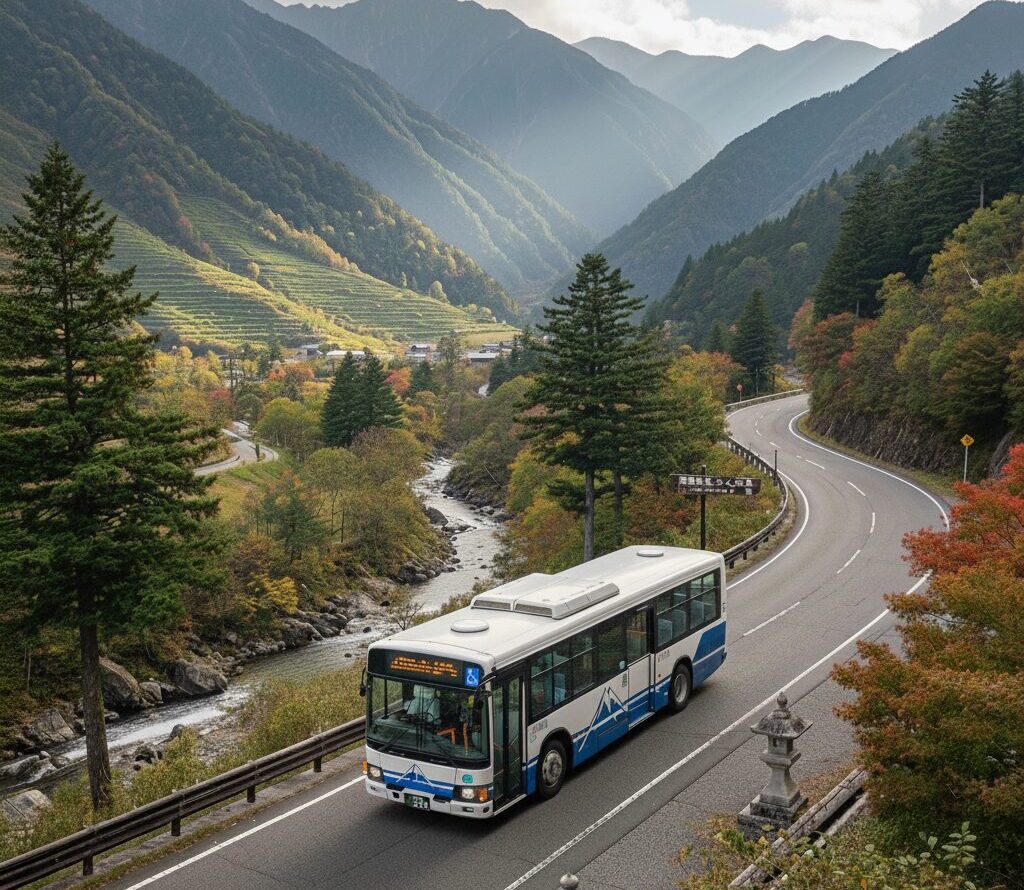【Deep Dive Essays】Bear Safety in Japanese Mountains: Why Behavior Matters More Than Gear

With bear-related human injuries reaching record levels, bear safety has become an unavoidable concern for mountaineers. Before relying on equipment like bear bells and bear spray, we must first understand bear ecology and preventive behavior. Drawing from ten years of experience including five bear encounters—one while guiding clients—this essay examines practical countermeasures from both equipment and behavioral perspectives.
目次
Part 1: The Worsening Bear Incident Crisis
Statistics Reveal a Critical Situation
Between April and late July 2025, 55 people across Japan were injured or killed in bear attacks, matching record levels. This is no longer a “rare mountain accident.” Both statistically and in media coverage, bear-related injuries have shifted into the category of “immediate risk.”
From 2019 to 2024, prefectures with the highest bear incident rates have been dominated by Hokkaido, Aomori, Iwate, Akita, Niigata, Fukushima, and Nagano. As someone who climbs and guides in these regions, these numbers are anything but abstract.
In August, a 26-year-old male climber was killed by a brown bear (Higuma) on Mt. Rausu-dake in Shiretoko. According to an investigation report by the Shiretoko Foundation, the victim departed the trailhead at 5:30 AM on the day of the incident and was already descending when the attack occurred at 11:00 AM. The report suggests he may have been moving quickly—possibly running—to complete the route in a short timeframe. Starting the climb during the early morning hours when bears are most active, combined with hurried movement, likely increased the encounter risk.
In October, a 75-year-old woman foraging for mushrooms in Kurihara City, Miyagi Prefecture, was killed by a bear. Another woman who was with her remains missing, and the search continues. The possibility that she was dragged away cannot be ruled out. Head trauma and abduction—these are typical bear behavior patterns.
Bears Entering Urban Areas: A New Phase
As seen with individual bears like OSO18 in eastern Hokkaido and “Super K” in Akita Prefecture making headlines, bear sightings in urban areas and farmland are no longer exceptional. Even in cities like Sapporo, bear sightings have become routine in recent years.
On Mt. Takao, bear sightings have been reported on multiple routes including Trail 6, with particular caution needed during the pre-hibernation period. Confirmed sightings have occurred near Kagenobu-yama and around Kusado-yama. Even low mountains in Tokyo Prefecture can no longer be considered safe.
Then in August, at Murodo-daira on the Tateyama Kurobe Alpine Route—at an elevation of 2,450 meters—a bear was spotted swimming in Mikuriga-ike pond. The Toyama Prefectural Police Mountain Rescue Team posted on X (formerly Twitter) calling it “an unprecedented and extraordinary sight” while issuing warnings. Murodo receives over one million visitors annually. It’s a tourist destination where many visitors arrive without mountaineering equipment. Yet bears appear there. This is no longer an “backcountry occurrence.”
The sight of the Toyama Prefectural Police Mountain Rescue Team writing bear sighting information on whiteboards at Murodo Terminal is becoming the new normal.
What lies behind this trend? In 2023, Akita Prefecture experienced complete crop failure of all three species that serve as bear food sources: beech, Japanese oak (Mizunara), and konara oak. When forest food supplies run short, bears move into human settlements. The combination of increasing bear populations, food shortages, and expanding human activity ranges has caused encounter risks to rise year after year.
Part 2: Bear Ecology and High-Risk Situations
Understanding Activity Patterns
During summer, bear activity peaks from 4:00-7:00 AM and 5:00-9:00 PM. In other words, the early morning starts and evening descents favored by climbers overlap with peak bear activity times.
Most of my five encounters occurred either in the morning or evening. When I encountered a bear from the side while guiding on Mt. Kurakake in Iwate, fortunately the startled bear fled first. But if it had been a mother with cubs, or if we’d stumbled into a feeding area, the outcome might have been different.
It’s also important to note that mother bears with cubs may be active during daytime hours to avoid dangerous male bears. The assumption that “daytime is safe” is false. Particular caution is needed for mother bears with cubs from spring through early summer.
Range and Seasonal Variation
Bears move within a narrow range from spring to summer, but roam widely in autumn. As autumn approaches, bears become increasingly active in search of food to prepare for hibernation.
While autumn is the most appealing season for climbers, it’s also a critical survival period for bears. Bears during this season tend to be more aggressive, increasing the danger level during encounters.
Bears Habituated to Sound
In some areas, bears have become habituated to sounds, requiring especially careful countermeasures for solo hikers and those active during early morning or evening hours. This points to an important limitation of equipment-dependent approaches.
Part 3: Questioning Equipment Effectiveness
Bear Bells: Effects and Limitations
Bear bells are probably the most widespread countermeasure equipment. The theory is to “announce your presence with sound and keep bears at a distance.”
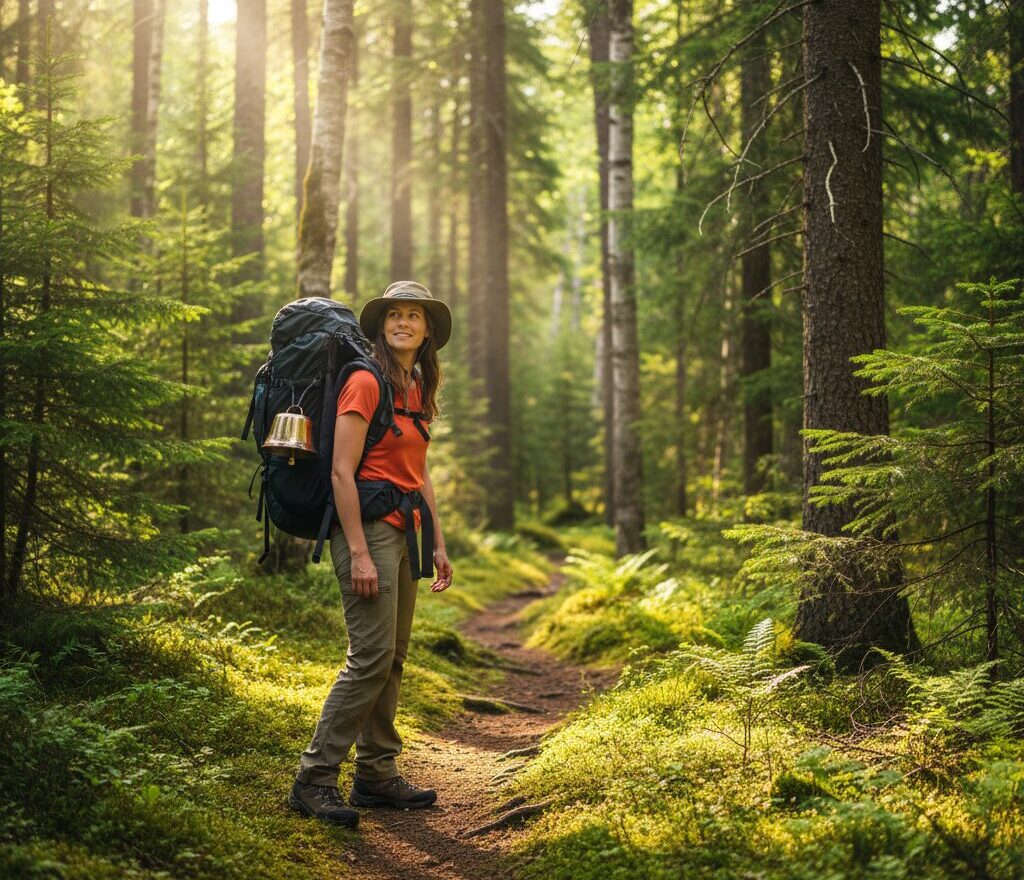
However, their actual effectiveness is questionable. First, wind and stream noise frequently drown out bell sounds. Second, their effect is minimal on bears habituated to sound. Third, walking while ringing a bell tends to drive away wildlife in general, interfering with nature observation.
I don’t regularly use bear bells myself. Instead, in areas with poor visibility, I consciously make vocal sounds or strike the ground with my trekking poles. Human voices are what bears are most wary of.
That said, for beginners and hikers who feel anxious, bear bells provide psychological reassurance. I don’t deny their value in that sense. If using them, situational judgment is necessary—such as not ringing them along streams or on windy ridgelines.
Bear Spray: Selection and Challenges
Common Misconception: “If I carry bear spray, I’m safe”
This is false. Without knowing how to use it, it won’t help in a critical moment. Carrying it without training only creates a false sense of security.
Bear spray is recognized as an effective physical defense measure. However, selection requires attention.
Among commercially available bear sprays, some types are not designed for brown bears (Higuma). Bear sprays for Asian black bears (Tsukinowaguma) and brown bears differ in spray distance and concentration. For climbing in Hokkaido, you must choose a product rated for brown bears.
Additionally, training is necessary for use. Can you spray accurately in a panic state? Can you account for wind direction? Is your carrying position easily accessible? These points must be confirmed in advance, or the spray won’t help when needed.
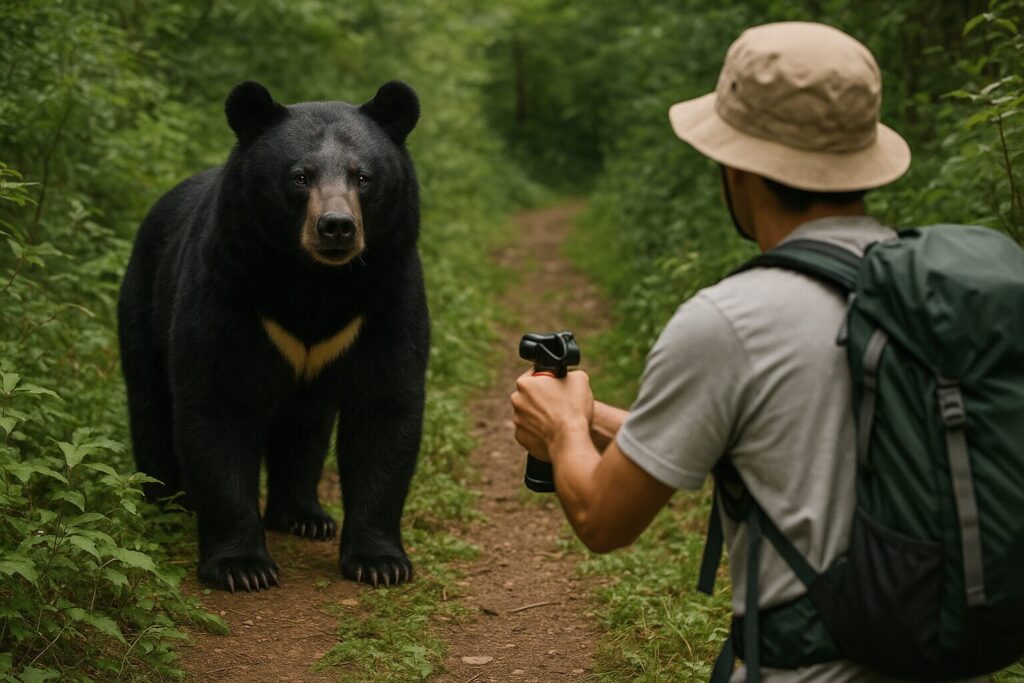
Furthermore, bear spray is not a panacea. The effective range is only a few meters, making it difficult to use once the bear has closed the distance. Prevention remains the best defense.
Whistles and Sound Deterrents
Electronic whistles that reach 120 dB are convenient for instant use. Regular whistles are also effective in that they produce loud sound without physical exertion.
However, these too may have limited effect on bears habituated to sound. Moreover, blowing a whistle after an encounter is too late. These should be considered tools for making preventive noise.
Radio as an Option
Carrying an AM radio while hiking effectively signals human presence to bears. Frequencies similar to human voices are considered especially effective.
This is a sensible approach. Sounds resembling human conversation are what bears are most wary of. For solo hikers, a radio becomes a viable option.
Part 4: Prevention and Behavior as Primary Defense
The Habit of Making Noise
Clapping hands every 10-20 meters and conversing while hiking in groups are effective measures. These should be consciously practiced, especially on trails with poor visibility.
In my experience, human voices are most effective. Even when solo, I vocalize—calling “Ho!”—in areas with limited sightlines. It may seem unnatural, but it’s worth it for safety.
In groups, conversation becomes a natural preventive measure. However, becoming too absorbed in conversation must not lead to decreased awareness of surroundings. The habit of periodically checking your environment is crucial.
Time Selection
When possible, avoid bear activity hours. Skip pre-dawn starts, beginning activity after 7:00 AM. Complete descents by 4:00 PM at the latest.
However, this is idealistic. In mountaineering, early morning starts and evening activity are often unavoidable. In such cases, more cautious behavior is required.
In the Rausu-dake incident, the victim departed at 5:30 AM and completed the round trip in approximately 5.5 hours. A rushed itinerary eliminates time for making noise and reduces attention to surroundings. Time margin equals safety margin.
Food and Waste Management
During tent camping or hut stays, food management is critical. Don’t keep food in tents. Carry out all garbage completely.
Avoid strongly scented foods when possible. Disposing of leftover curry or ramen broth on the ground is out of the question.
Route Finding and Information Gathering
During the planning stage, check bear sighting information. Always review “bear sighting maps” published by local governments.
In route selection, pass through open areas when possible. Avoid bushwhacking to the extent feasible. Stream corridors require special attention as water noise masks your presence.
Judgment as a Guide
As a guide, client safety is paramount. If bear sightings are reported, I don’t hesitate to change routes. Some may say “we came all this way,” but nothing is worth more than life.
Solo climbers should adopt the same approach. Have the courage to turn back.
Part 5: Actions During Encounters
Never run!
Running triggers the bear’s pursuit instinct. Humans cannot outrun bears (which reach 60 km/h). The rule is to back away slowly or remain in place.
Distance-Based Responses
If you spot a bear at a distance, quietly leave the area. Don’t make noise, don’t run, don’t agitate the bear.
If you encounter a bear at approximately 30 meters, keep your eyes on the bear and back away slowly. Turning your back and running stimulates the bear’s pursuit instinct. This must never be done.
The Rausu-dake incident demonstrates the danger of hurried movement. The Shiretoko Foundation’s investigation report notes the possibility that time pressure led to running. Rather than running to escape after an encounter, the victim may have been rushing through the entire route. Running eliminates sound and invites unexpected close encounters with bears. Humans cannot match bear speed.
Close-range encounters are most dangerous. In this situation, use bear spray if available. Without it, shield yourself with your pack and lie face-down on the ground, protecting the back of your neck. This isn’t playing dead—it’s a posture showing you’re not a threat.
Mother Bears with Cubs Are Especially Dangerous
Mother bears become aggressive to protect their young. If you see a cub, assume the mother is nearby. Leave the area immediately.
Never approach a cub. Don’t even think about taking photos.
If Attacked
Realistically, the possibility of being attacked is never zero. In that case, protecting your head and neck is the top priority.
If wearing a backpack, it provides some defense. Lie face-down, covering the back of your neck with both hands. Don’t move until the bear leaves.
Conclusion: Balancing Equipment and Behavior
In bear safety, equipment plays only a supplementary role. Neither bear bells nor bear spray guarantee safety by themselves.
What matters most is understanding bear ecology and taking actions to avoid encounters. Consider activity times, maintain the habit of making noise, don’t neglect information gathering. These accumulated practices reduce risk.
If carrying equipment creates complacency and behavioral awareness suffers, the approach is counterproductive. Equipment is preparation for “worst case scenarios”—”actions to avoid encounters” remain the front-line defense.
Five encounters over ten years may not seem frequent. Yet each time, I’m struck by how much depends on chance. The bear wasn’t with cubs. We weren’t in a feeding area. We were a group rather than solo. If any of these conditions had differed, the outcome might have changed.
Bears are residents of mountains we’re merely borrowing. Maintaining respect, keeping distance, and seeking coexistence—this is the mountaineer’s responsibility.
Summary
◆ Current Bear Incident Status
- 2025 first-half casualties reached record levels (55 people)
- Incidents concentrated in Iwate, Akita, Hokkaido, and Tohoku region
- August: 26-year-old male killed on Rausu-dake (5:30 AM start, 11:00 AM incident, possibly rushing)
- August: Bear spotted swimming in Mikuriga-ike at Murodo (elevation 2,450m, annual visitors exceed 1 million)
- October: 75-year-old woman killed in Kurihara City, another woman missing
- Bear appearances normalized in urban areas, low mountains, and tourist destinations
◆ High-Risk Encounter Situations
- Activity times: Early morning (4-7 AM) and evening (5-9 PM)
- Season: Autumn (pre-hibernation feeding period)
- Location: Brush, stream corridors, feeding areas
◆ Equipment Selection
- Bear bells: Supplementary effect, limited effectiveness on habituated bears
- Bear spray: Select brown bear-rated products, training essential
- Whistles/radios: Effective for preventive noise-making
◆ Most Important Preventive Behaviors
- Habit of making noise (voices, clapping, conversation)
- Activity time adjustment (early morning/evening are bear activity hours)
- Allow time margin in activity plans (rushing is dangerous)
- Pre-check sighting information
- Proper food and waste management
- Courage to turn back
◆ Basic Actions During Encounters
- Long distance: Quietly leave the area
- Medium distance: Back away slowly, never run
- Close range: Defensive posture, protect head
- Running to escape triggers pursuit instinct and is most dangerous
◆ References
- Shiretoko Foundation, “Preliminary Investigation Report on Brown Bear Human Injury Incident on Mt. Rausu-dake Trail, 2025”



